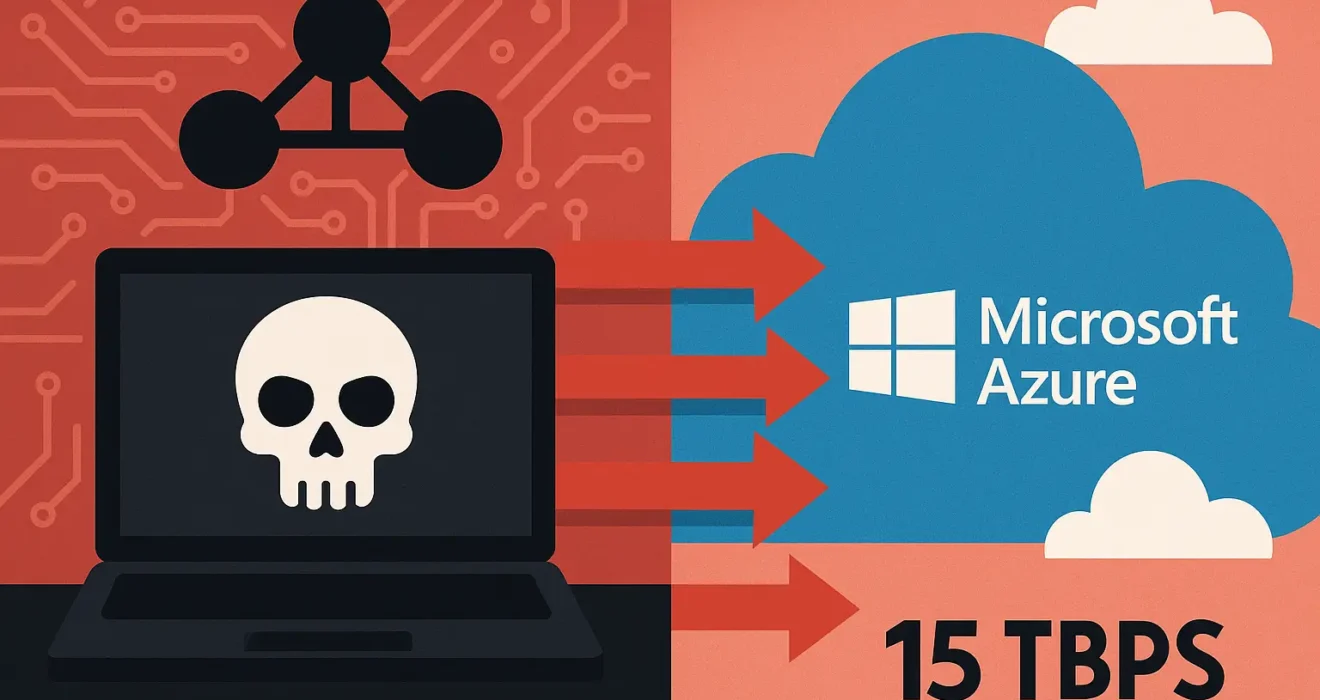Aisuru Botnet Launches Massive 15 Tbps DDoS Attack on Azure
A powerful new cyber threat has emerged as Microsoft confirmed that its Azure cloud platform was recently targeted by a massive distributed denial-of-service (DDoS) attack driven by the Aisuru botnet. The attack reportedly leveraged over 500,000 unique IP addresses and generated traffic peaking at an astonishing 15 terabits per second (Tbps)—one of the largest DDoS attacks ever recorded.
What Happened?
Microsoft’s security team revealed that the Aisuru botnet orchestrated a coordinated assault using compromised Internet-connected devices worldwide. These devices—including routers, cameras, and other IoT equipment—were hijacked and turned into attack nodes, overwhelming Azure’s infrastructure with unprecedented traffic volume.
Thanks to Azure’s global protection systems, service disruption was minimized. However, the size and sophistication of the attack highlight a growing threat that organizations must not ignore.
What Is the Aisuru Botnet?
Aisuru is a rapidly evolving botnet believed to be part of a new generation of high-capacity DDoS networks. Unlike older botnets built on traditional malware-infected computers, Aisuru primarily relies on IoT devices, which are often poorly secured and easily compromised.
Notable characteristics of the Aisuru botnet include:
– Massive scale: Hundreds of thousands of devices distributed globally
– Extreme bandwidth: Attacks measured in the double-digit terabit range
– High packet volume: Capable of generating traffic floods at record speeds
– Persistent infection: Devices remain enslaved until manually secured
Why This Attack Matters
The Azure incident marks a significant milestone in the growth of DDoS-as-a-weapon. Several key concerns arise from this event:
1. Escalation of DDoS Capabilities
Attacks exceeding 10 Tbps were once theoretical. Now, they are becoming reality. Organizations relying on cloud services must prepare for far higher traffic surges than before.
2. IoT Devices as Attack Platforms
Millions of everyday consumer devices can now be weaponized. Default passwords, outdated firmware, and insecure networks make them easy targets for attackers.
3. Supply-Chain Vulnerabilities
Many IoT infections occur through compromised firmware update channels, giving attackers broad access in a short time.
4. Cloud Infrastructure Under Pressure
Even robust platforms like Azure, AWS, and Google Cloud must continually evolve to withstand such colossal attacks.
How Organizations Can Protect Themselves
This incident is a reminder that proactive security is essential. Here are steps businesses and service providers should consider:
Strengthen IoT Security:
– Change default device passwords
– Keep firmware updated
– Segment IoT devices on separate networks
Adopt DDoS Mitigation Solutions:
– Use cloud-based traffic scrubbing
– Deploy anycast routing and multi-region failover
– Enable automated scaling where possible
Monitor Network Traffic:
Identify abnormal patterns early, especially unusual outbound traffic that could indicate compromised devices.
Prepare an Incident Response Plan:
A clear strategy helps minimize downtime and maintain customer trust during an attack.
A Wake-Up Call for the Industry
The Aisuru botnet attack on Microsoft Azure is more than a single incident—it is a warning of what the next generation of cyber threats looks like. With DDoS attacks growing in size and speed, and IoT devices increasingly targeted, organizations must raise their security standards.
As cybercriminals continue to innovate, so must everyone involved in digital infrastructure. Staying ahead requires vigilance, modern security tools, and a strong commitment to protecting networks from emerging global threats.

